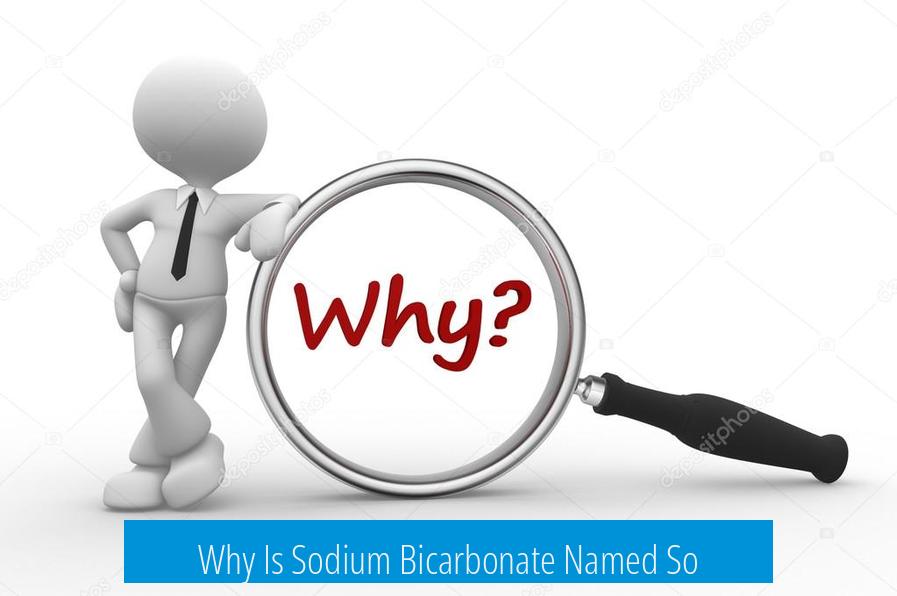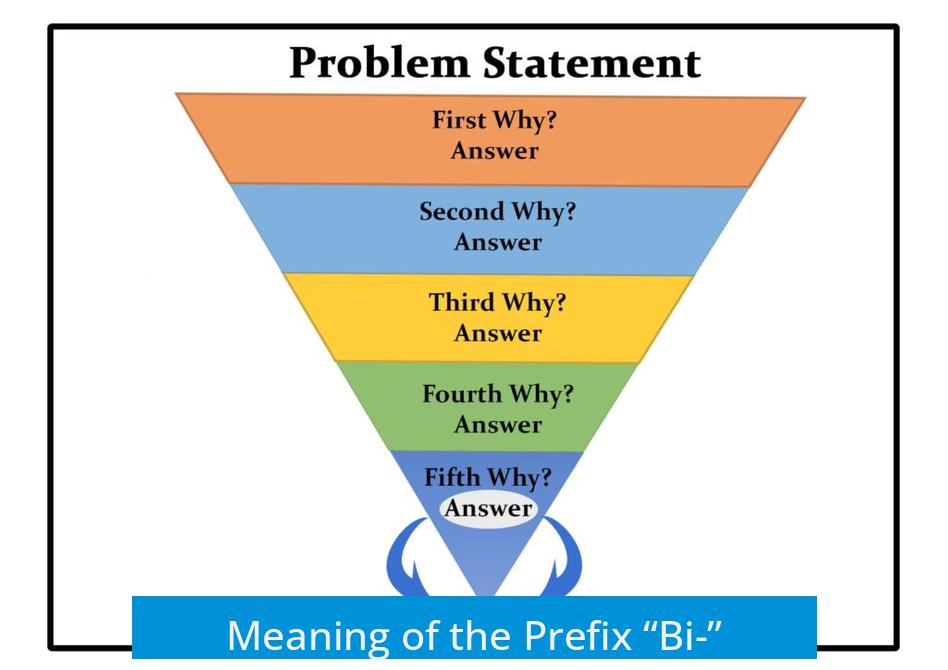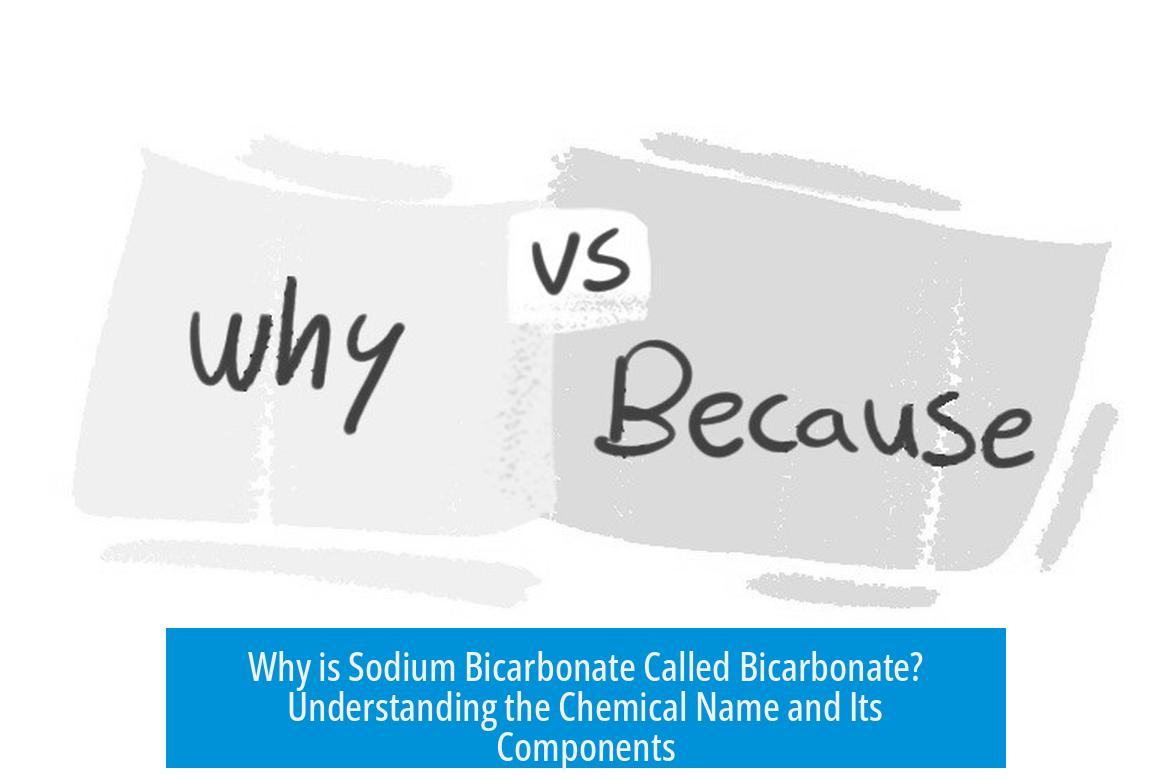Why Is Sodium Bicarbonate Named So?

Sodium bicarbonate gets its name from the bicarbonate ion (HCO3−), where the prefix “bi-” historically indicated the presence of a hydrogen ion added to the carbonate ion (CO32−), making it hydrogen carbonate.
The Chemical Basis of the Name
The term “bicarbonate” refers to the hydrogen carbonate ion. This ion forms when carbonic acid (H2CO3) loses one proton but retains one hydrogen atom. Its chemical formula is HCO3−. This intermediate ion bridges carbonic acid and carbonate ions.
Meaning of the Prefix “Bi-”

Historically, the prefix “bi-” suggested the addition of one hydrogen to an anion. When added to carbonate (CO32−), it becomes bicarbonate (HCO3−), reflecting the presence of one hydrogen ion.
Though now considered outdated in modern systematic nomenclature, this prefix appears in other ions like bisulfate (HSO4−) and bisulfite (HSO3−). In this context, “bi-” indicates the hydrogen-containing form of a commonly double-charged anion.
Relation to Sodium
Sodium bicarbonate simply combines the sodium cation (Na+) with the bicarbonate anion (HCO3−). Thus, its full chemical name is sodium hydrogen carbonate. The name clearly reflects its composition.
Common Misconceptions
- It is incorrect to think “bicarbonate” means the compound contains two carbons.
- It does not imply the carbonate ion exists in two forms or “goes both ways.”
- These ideas do not align with chemical facts and nomenclature standards.
Summary Table: Sodium Bicarbonate Naming
| Term | Meaning | Chemical Formula |
|---|---|---|
| Carbonate | CO32− ion | CO32− |
| Bicarbonate (Hydrogen Carbonate) | Carbonate + 1 hydrogen ion | HCO3− |
| Sodium Bicarbonate | Sodium ion + bicarbonate ion | NaHCO3 |
Key Takeaways
- The “bi-” prefix signals one hydrogen addition to carbonate.
- Sodium bicarbonate is sodium hydrogen carbonate, combining Na+ and HCO3−.
- Bicarbonate is an intermediate ion in carbonic acid deprotonation.
- “Bi-” as a prefix in this context is a historical naming convention.
- Misinterpretations about “bi-” meaning two carbons or dual behavior are inaccurate.
What does the “bi-” in sodium bicarbonate mean?
The “bi-” prefix means the addition of a hydrogen ion to the carbonate ion. It shows that bicarbonate contains hydrogen, making it hydrogen carbonate. This naming is now considered outdated but explains the term’s origin.
Why is sodium bicarbonate also called sodium hydrogen carbonate?
Sodium bicarbonate is named so because it contains the bicarbonate ion (HCO₃⁻). This ion includes one hydrogen atom, so the full name reflects that it is sodium combined with hydrogen carbonate.
How is bicarbonate chemically related to carbonate?
Bicarbonate is a form of carbonate that has one hydrogen ion added. Carbonate has the formula CO₃²⁻, while bicarbonate has HCO₃⁻. Bicarbonate acts as an intermediate during carbonic acid breakdown.
Is the “bi-” prefix still used in chemical naming?
The “bi-” prefix is now mostly outdated. It was once used to indicate the presence of a hydrogen ion in anions like bicarbonate and bisulfate. Modern chemistry prefers terms like hydrogen carbonate instead.
Are there common misunderstandings about the name sodium bicarbonate?
Yes, some think sodium bicarbonate has “two carbons” or that it “goes both ways,” but these are incorrect. The name simply indicates sodium and hydrogen carbonate ions are combined.





Leave a Comment